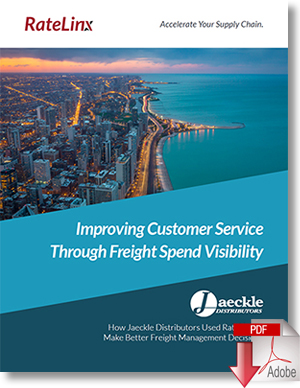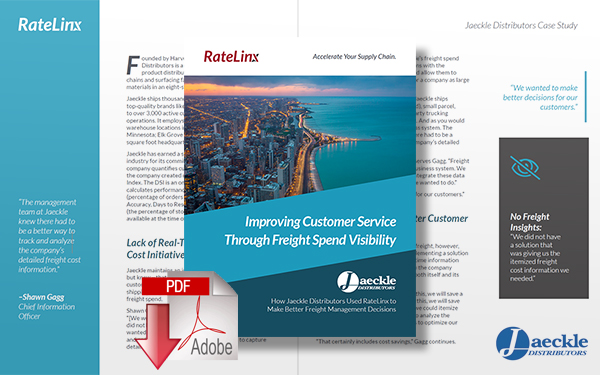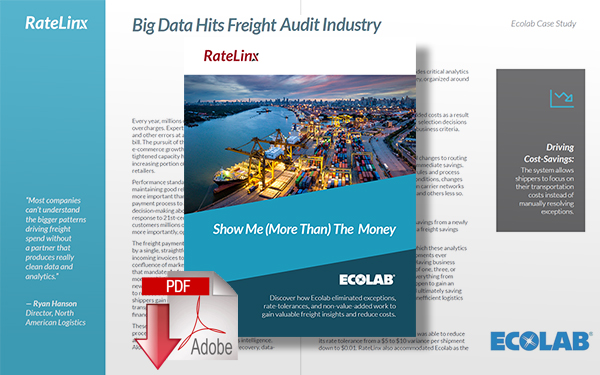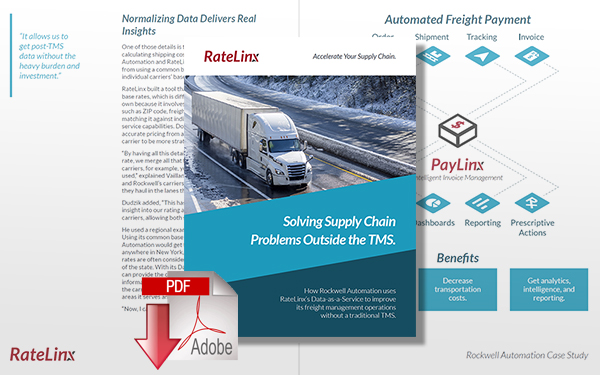Improving Your Logistics Carrier Request for Proposal Process

Working with potential carriers and crafting an RFP to negotiate the best price is a critical process all shippers face and is easily overlooked, but you can improve this process to have a positive impact on your carrier network.
How Do You Negotiate Today?
very year, it comes around - the annual GRI (General Rate Increase) season for your transportation providers.
It’s a tireless effort to craft a Request for Proposal (RFP) and work with your potential carriers to negotiate the best price.
The RFP process is a critical one all shippers face.
However, the process is often overlooked.
Should we bid, absorb the rate change, or negotiate the rates further?
There is no clear-cut answer and decisions will vary by the shipper and economic conditions.
The decision can lead to incurring major costs or cost-savings depending on how the RFP process is completed.
Do Your Homework
The decision about how to handle potential price increases will determine your outcome through the GRI process.
Does your organization complete a full market analysis?
There are many available free resources to monitor the freight market today.
The RFP process requires a healthy amount of homework on the freight market and the economy in general.
“We will always put our best foot forward when we understand exactly what we are moving, where it’s going, and when it’s running on a current Estes rate base,” Pat Martin, VP of Sales and Strategic Planning Estes Express Lines
How Does Your Organization View Freight Today?
Does your organization view freight as a commodity or as a service?
When freight is negotiated like a commodity, the carrier is categorized by price and price alone.
When freight is negotiated as a service, the 3 key points to procuring freight are viewed:
- Quality
- Service
- Price
This is the perspective from which any organization should be viewing freight services procurement.
Price means nothing if the shipment does not arrive on-time and undamaged. The impact of sacrificing quality and service for the price will disrupt your supply chain immediately and lead to much higher costs long-term in relation to disruption.
Transparency is Key
An RFP or GRI should include clear historical data of at least 60 days of shipment data from your invoice details and not your ERP.
Giving this transparency on the front end with your current and potential carriers allows them to give their best pricing without disrupting the contract in mid-term for adjustments due to assumptions on your freight profile. Hiding oversized and high-class commodities will only lead to a difficult conversation mid-contract and disrupt your relationship long term.
“A proper RFP should include freight class, commodity, seasonality volume variances, pictures of freight and packaging in order to give true transparent pricing,” according to Pat Martin, VP of Sales, and Strategic Planning at Estes Express Lines
Martin also explains it is important for shippers to understand what carriers do to operationally support them. “A carrier can always lower price and lower service standards as well. Making that clear in the RFP is critical to align service and cost.”
Transparency is key to building trust on both ends and the best pricing scenario as you work through the negotiation and future relationship.
What is the Correct Rate Base?
The goal is to use the most effective rate base for the carrier to provide the best opportunity. Allowing the carrier to use their own rate base allows them to know their exact costs - without adding extra margin.
Granularity is key to obtaining the best rates and service offerings. This circles back to giving the correct data and transparency.
“We will always put our best foot forward when we understand exactly what we are moving, where it’s going, and when it’s running on a current EXLA rate base,” Martin says. Allowing a carrier to bid down to zip code level vs. just state to state will allow them to put their best pricing in place for lanes they want to obtain.
Putting it all Together
Negotiating freight terms during the RFP process can be stressful, but it does not have to be. Leveraging freight as a service offering allows for both parties to win and sustain the business partnership.
Simplification to your lane offerings and allowing transparency will allow a shipper to have a sustained contract offering from the carrier.
Balancing your number of carriers to the geographic spread of your freight allows for a competitive service offering.
Transparency in pricing will build to more quantifiable analytics and freight forecasting in your organization.
The result will also allow the shipper to have a balanced carrier network that becomes more predictable as the supply chain evolves.
About the Author
Jeff Dudzik brings RateLinx 20+ years of leadership experience in the logistics and supply chain industry. He brings a deep and breadth of knowledge in global transportation management, asset carrier management, and logistics procurement. Linking his diverse background and extensive experience, Jeff joins as Global Vice President of Carrier Management to oversee the Carrier Services team of RateLinx. Jeff and his team are passionate about expanding and growing carrier relationships.
Related Article: 5 Reasons Your Logistics Cost-Savings Initiatives Are Suffering
Related Case Study Papers
Improving Customer Service Through Freight Spend Visibility
This case study details out how Jaeckle Distributors, a flooring and surfacing product distributor, used RateLinx to make better freight management decisions. Download Now!
Focusing on Transportation Costs Instead of Manually Resolving Freight Exceptions
In this case study, we discover how Ecolab, one of the largest water, hygiene, and energy technology and service businesses in the world, eliminated exceptions, rate-tolerances, and non-value-added work to gain valuable freight insights and reduce costs. Download Now!
Solving Supply Chain Problems Outside the TMS
In this case study paper, we detail how Rockwell Automation uses RateLinx’s Data-as-a-Service to improve its freight management operations without a traditional transportation management system. Download Now!
More from RateLinx
Article Topics
RateLinx News & Resources
Optimizing Parcel Spend with Reveel and Ratelinx Improving Your Logistics Carrier Request for Proposal Process Focusing on Transportation Costs Instead of Manually Resolving Freight Exceptions Improving Customer Service Through Freight Spend Visibility 5 Reasons Your Logistics Cost-Savings Initiatives Are Suffering Integrating Data Streams Improves Retail Supply Chains Using SWOT Analysis to Prepare Your 2020 Supply Chain Technology Strategy More RateLinxLatest in Transportation
Is the Trailers as a Service (TaaS) Model Right For Your Business? Why Grocery Shoppers are Leaving Stores and Buying Their Food Online Unlocking Efficiency: Navigating Sea Freight Logistics in Supply Chain Management Is There a Next Generation of Truckers? Data Reveals Grim Outlook A Look at Baltimore’s Key Bridge Collapse—One Month Later Baltimore Continues Bridge Recovery With Opening of New Channel How Shippers Can Prep for Hurricane Season More Transportation

















